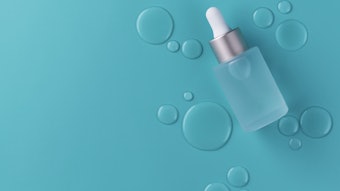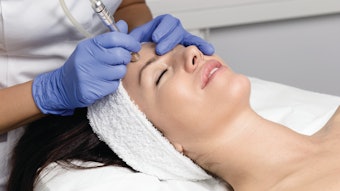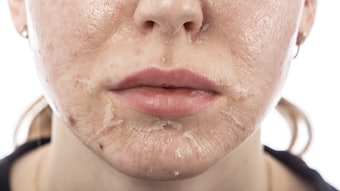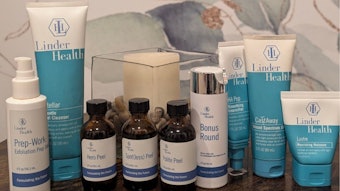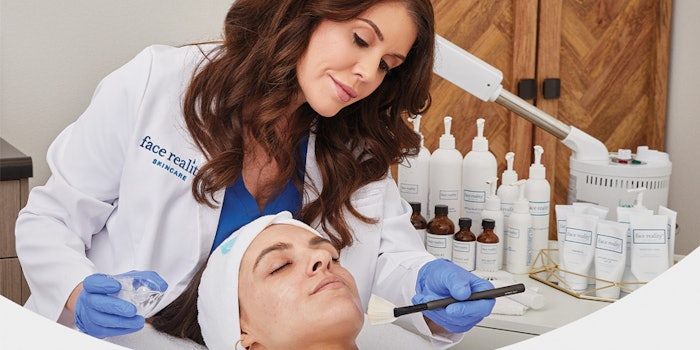
4-Time Winner of Best Acne Line
Acne is the most common skin condition in the United States and will affect up to 50 million Americans any given year, across all ages, genders, and race. Contrary to popular belief, acne is not an adolescent condition, or one caused by poor hygiene. There are many exacerbating factors such as diet and skin care products, but at its core acne is a hereditary condition that cannot be cured. Acne can be success fully managed when treated with The Face Reality Clear Skin Method, a holistic and adaptive approach that takes each client's lifestyle, nutrition, and unique skincare needs into account. Given the sheer volume of population who will experience acne, it is highly likely that you will come across a client with moderate to severe acne. Here are the top four things to know so you can help ever y client who walks through your door.
(Pictured: Acne Expert Heather Hallen, treating her client Anastasia.)
1. Understanding Acne
Acne is an inherited disorder of the pores that is defined by the shedding of dead skin cells at a much faster rate than normal. Where normal pores shed one layer of dead skin cells per day, acne-prone pores shed up to five layers. The excess shedding of skin cells combined with the cohesive nature of sebum creates the microcomodome, which is the beginning of all acne. This condition will cause inflamed and noninflamed lesions alike.
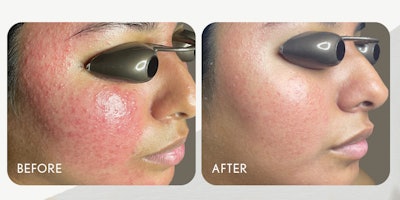
2. Ingredients Adaptive Treatment
A consistent home care routine is imperative to reach and maintain results. An acne client's home care routine is determined by their skin type, acne type, severity, age, and other various factors. All these factors will dictate the type and strength of exfoliating serums and benzoyl peroxide, and you will need to slowly introduce these "active" products into their routine to avoid dryness, irritation, and redness. Slowly increasing usage of active products ensures optimal skin health while also pushing the skin to clear. As the skin acclimates to active ingredients, you will need to adapt the client's home care to maintain skin clarity.
3. Nutrition & Supplements
The main nutritional concerns for acne-prone individuals are hormone disruption and inflammation. Inflammatory foods high in glycemic index, saturated fat, trans fats, and refined sugar disrupt hormones and insulin levels. Iodides irritate pores and cause acne flare-ups. Supplements can help internally. Zinc reduces inflammation, especially in clients with excessive bleeding during extractions. Molecularly distilled omega-3 fish oil helps with chronic dryness, inflammation, and hormonal breakouts.
 Michael Razzano, Acne Expert & Face Reality Ambassador
Michael Razzano, Acne Expert & Face Reality Ambassador
4. Lifestyle Matters
Three major lifestyle factors to consider are pore-clogging ingredients, sweat, and sun exposure. Pore-clogging ingredients found in various products (from makeup to laundry detergent) can worsen acne. Sweating during any activity can lead to breakouts and fungal conditions like folliculitis. It is crucial for clients, including those with acne, to protect their skin from sun exposure by wearing sunscreen daily. This is especially important as acne clients may already have compromised skin and hyperpigmentation.
"One thing I have learned about acne is it's more complex than just using the right products. Face Reality gave me the knowledge on how diet and lifestyle habits play a huge part in treating acne."
-Michael Razzano, Acne Expert & Face Reality Ambassador, Philadelphia Facial Plastic Surgery & Medspa
*Based on using both professional treatments and home care products under the guidance of a trained Face Reality aesthetician (Certified Acne Expert). Results may vary.
Scan to Become a Certified Acne Expert
© 2023. Face Reality, LLC. All Rights Reserved.
Disclaimer:
The above paid-for content was produced by and posted on behalf of the Sponsor. Content provided is generated solely by the Sponsor or its affiliates, and it is the Sponsor’s responsibility for the accuracy, completeness and validity of all information included. Skin Inc. takes steps to ensure that you will not confuse sponsored content with content produced by Skin Inc. and governed by its editorial policy.
